American Beauties! Your Guide to Every State Flower
Just like we have the American flag and individual U.S. state flags, states also have their own state flowers. (The national flower is the rose!)
Some states share their state flowers with others, while others have had their own flowers bred just for them (awesome work out there, Oklahoma).
State flowers celebrate the individual agriculture and flora of each state, and together they make one heck of a lovely patriotic bouquet. Find out your state flower and fun facts about it here.
Related: What Is Your Birth Flower? Find Out the Meaning Behind the Blooms for Each Month
50 State Flowers
Alabama State Flower: Camellia
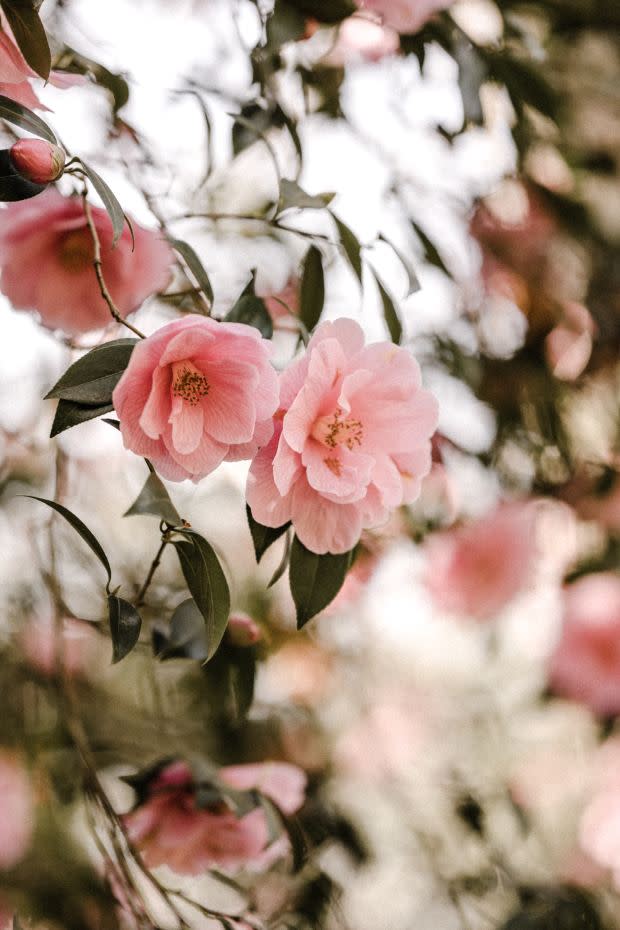
The Alabama state flower is the camellia. It replaced the goldenrod on Aug. 26, 1959, as many considered the goldenrod a weed at the time. Camellias are native to eastern Asia. They grow on shrubs that can be up to 15 feet tall and up to eight feet wide.
Related: These 75 Different Types of Succulents Are Not Only Gorgeous—but Also Hard To Kill
Alaska State Flower: Forget-Me-Not
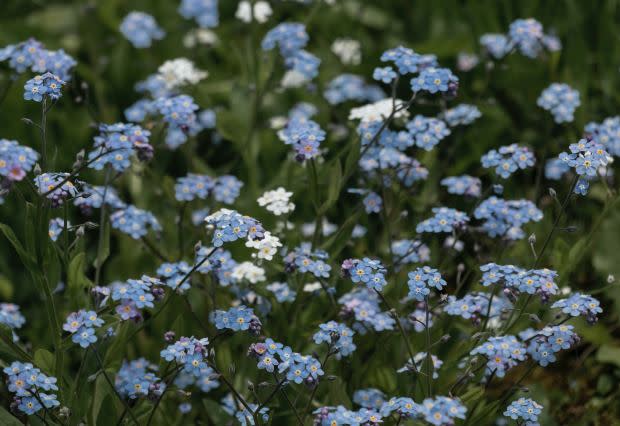
Forget-me-nots are the Alaska state flower. These blue and yellow blooms are often used for groundcover and were one of the late Princess Diana's favorite flowers. You can see them in Alaska in the summer.
Arizona State Flower: Saguaro Cactus Blossom
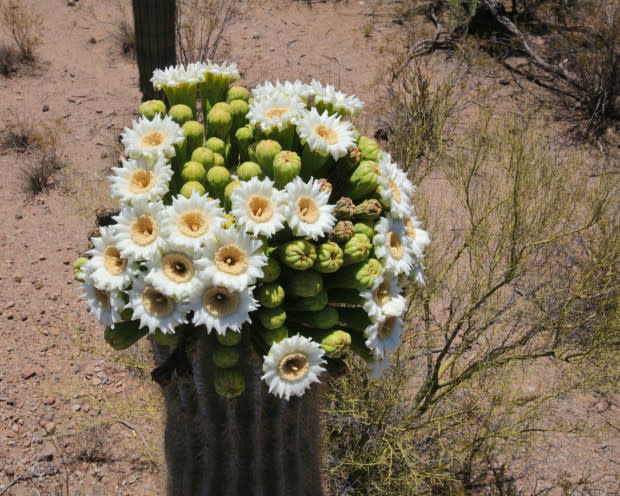
iStock
The Arizona state flower is, appropriately, the saguaro cactus white blossom. Saguaros are the largest cacti species in the United States. The flowers appear on the saguaro's arms in late spring and early summer each year.
Arkansas State Flower: Apple Blossom
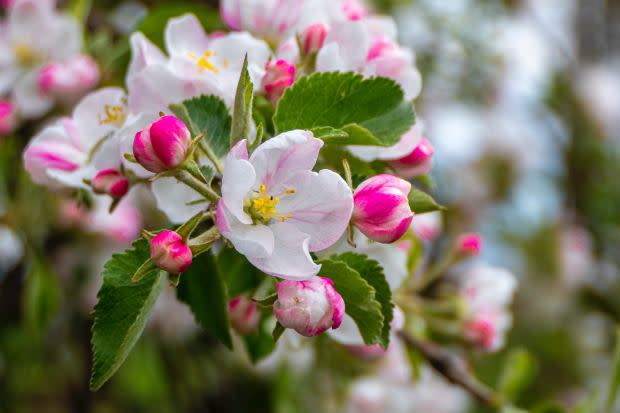
The apple blossom was named the Arkansas state flower in 1901, when the state was one of the biggest apple producers in the country.
California State Flower: California Poppy
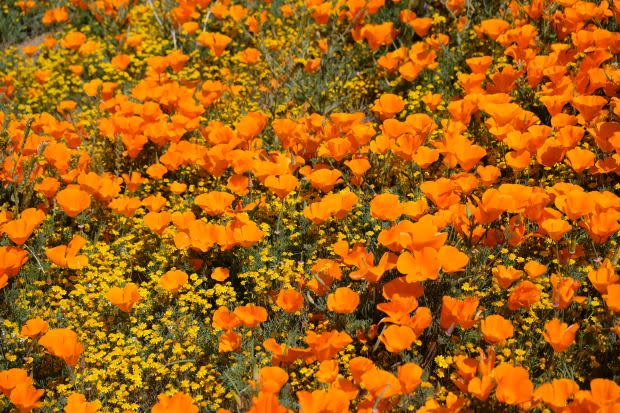
The California state flower is the California poppy. These beautiful, bright yellow-orange blossoms contain poppy seeds, a delicious addition to recipes both sweet and savory. They're native to the west coast from Oregon to Baja, California, and were the state flower of California in 1903.
Related: 101 Creative Names for Your Houseplants—AKA Your Sweet, Precious, Angelic Plant Babies
Colorado State Flower: Rocky Mountain Columbine
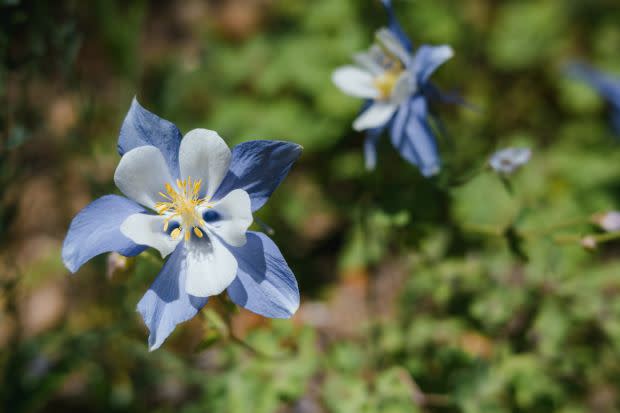
The Colorado state flower is the Colorado blue (or Rocky Mountain) columbine. These blue and white flowers feature colors that are prominent in the Colorado state flag.
Connecticut State Flower: Mountain Laurel
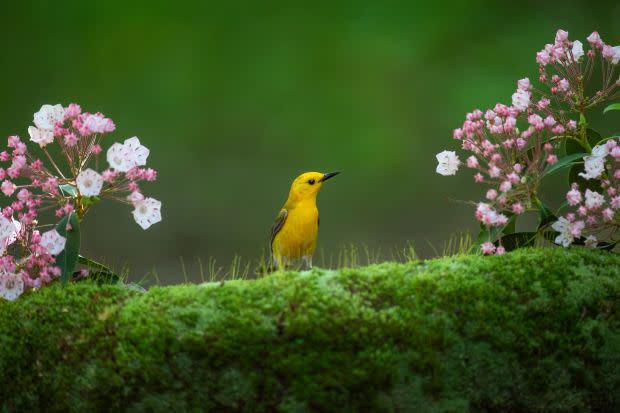
The Connecticut state flower is the mountain laurel. It's an evergreen shrub with blossoms that can be white, pink, a combination of both, and/or occasionally purple. The leaves can change color throughout the year, ranging from various shades of green to purple.
Related: Avoid Getting Eaten Alive This Summer With These 25+ Plants That Repel Mosquitoes
Delaware State Flower: Peach Blossom
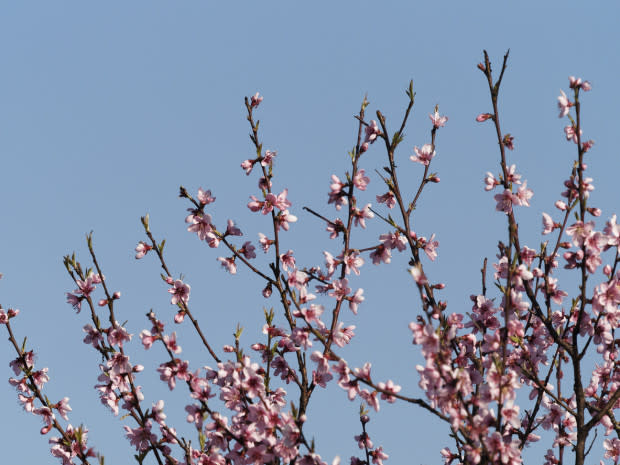
iStock
While you'd expect anything peach-related to be tied to Georgia, the peach blossom is actually the Delaware state flower. The state had 800,000 peach trees in 1895, when the peach blossom was named the Delaware state emblem. It was named the official state flower in 1953.
Florida State Flower: Orange Blossom

iStock
It's no surprise that the Florida state flower is the orange blossom, considering that's the state where most of our orange juice comes from too. The orange blossom was declared Florida's state flower in 1909.
Georgia State Flower: Cherokee Rose
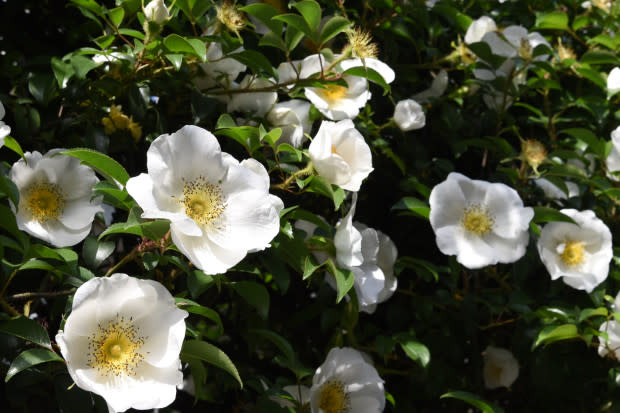
iStock
Cherokee rose, or rosa laevigata, is the official Georgia state flower. The flower is native to eastern Asia, though it is historically often associated with the Trail of Tears ethnic cleansing of Native Americans. The golden center of the flowers is said to represent the gold stolen from the Cherokee people.
Related: 30 Best Hard-to-Kill Houseplants That Thrive Even When They're Neglected
Hawaii State Flower: Yellow Hibiscus
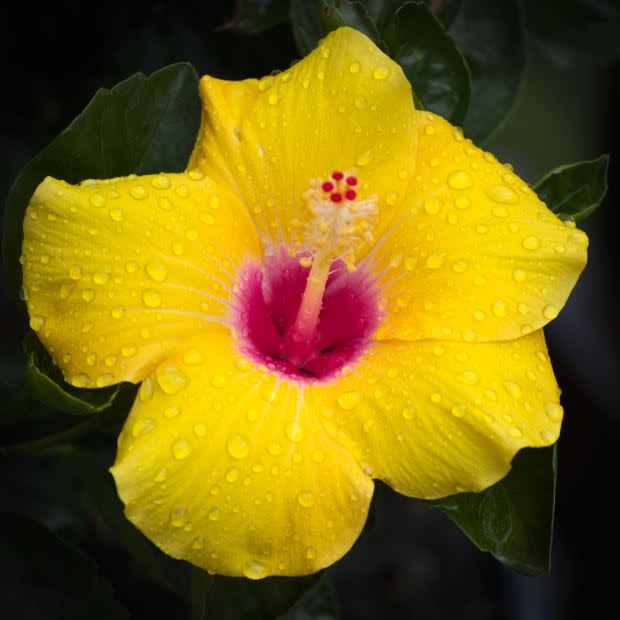
The yellow hibiscus is the Hawaii state flower as of 1988. Before that, all colors of hibiscus were considered the state flower of Hawaii. The yellow hibiscus is a rare and endangered species that grows natively only in the Hawaiian islands.
Illinois State Flower: Violet

iStock
The Illinois state flower is the violet, chosen by schoolchildren in 1908. It was the first state to declare the common blue violet as its official state flower. Common violets are edible—and they're actually really high in vitamins A and C!
Related: Pet and Plant Parents, Pay Attention! These 29 Plants Are Poisonous to Dogs
Indiana State Flower: Peony
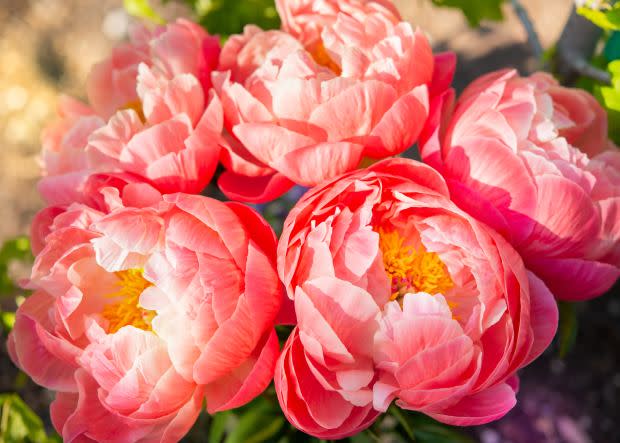
The Indiana state flower is the peony. These beautiful blooms have gained popularity nationwide in recent years thanks to their vibrant and varied colors. The peony became the state flower in 1957, booting out the zinnia, which previously held the title since 1931.
Iowa State Flower: Wild Rose
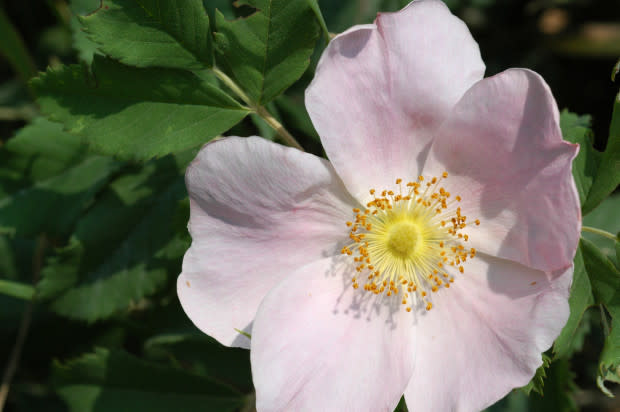
iStock
The wild rose is the Iowa state flower since 1897, when it was used to decorate the USS Iowa battleship.
Kansas State Flower: Sunflower
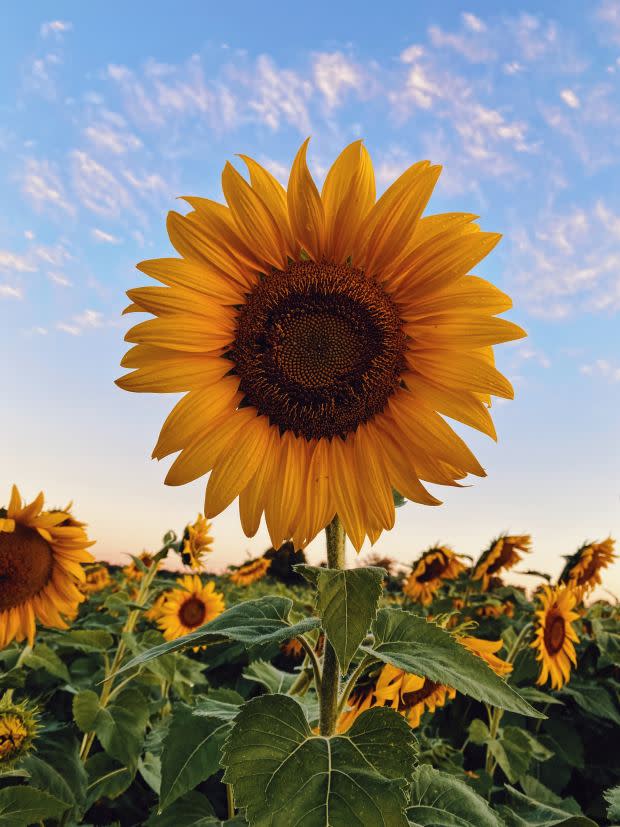
The Kansas state flower is the only state flower (so far!) to also be a song by Post Malone: the sunflower! With its bright, cheery yellow blossoms and seeds perfect for snacking, these are a favorite flora nationwide. Kansas, however, loves the sunflower so much that it's actually called the Sunflower State.
Related: 12 Best Privacy Trees for Peace and Solitude—No Fencing Required
Kentucky State Flower: Goldenrod
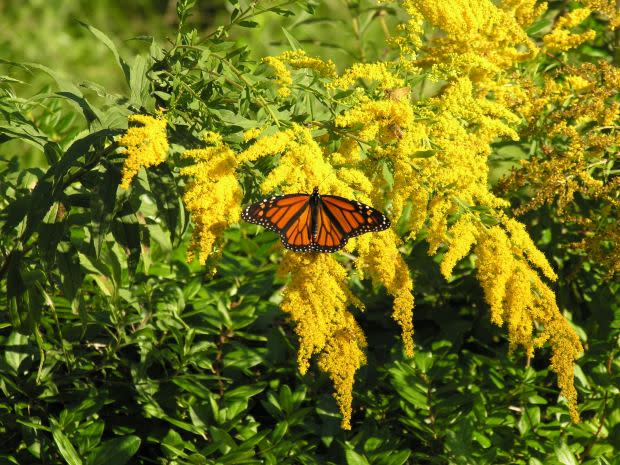
The Kentucky state flower is the goldenrod. It's a member of the sunflower family and is considered a keystone species, meaning it has a huge impact on the environment where it grows. It's crucial in many areas to biodiversity because it attracts pollinators like bees, butterflies and moths.
Louisiana State Flower: Magnolia
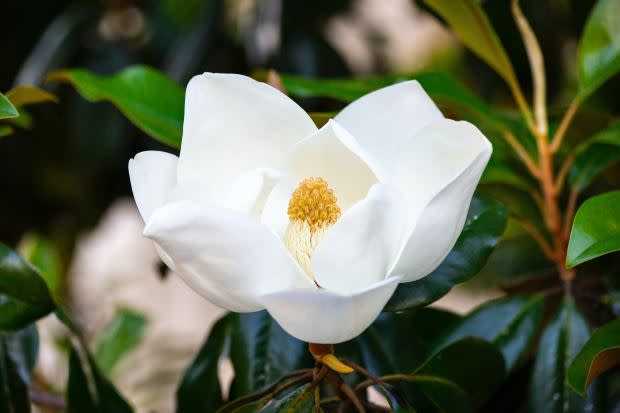
While magnolias have in recent years been associated with Texas thanks to Chip and Joanna Gaines, the magnolia is actually the Louisiana state flower. It was designated as such in 1900 for the soaring number of magnolia trees in the state.
Maine State Flower: White Pine Cone
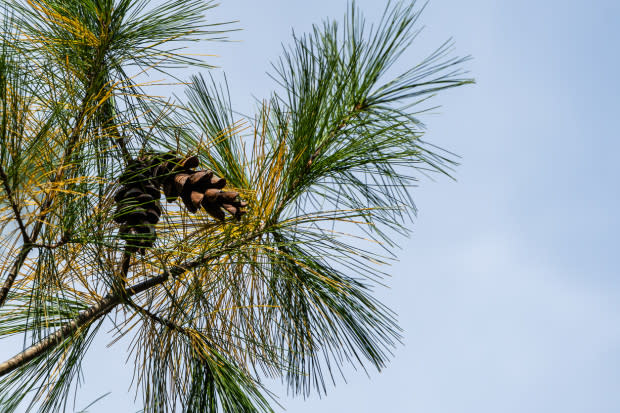
iStock
The Maine state flower is a different breed: It's the white pine cone! The Maine state legislature chose it because Maine is known as the Pine Tree State.
Maryland State Flower: Black-Eyed Susan
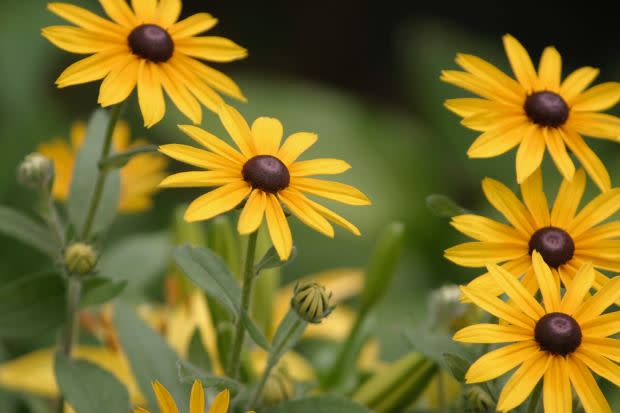
The Maryland state flower is the black-eyed Susan. It was deemed the official state floral emblem in 1918. The black-eyed Susan is a member of the sunflower family.
Massachusetts State Flower: Mayflower
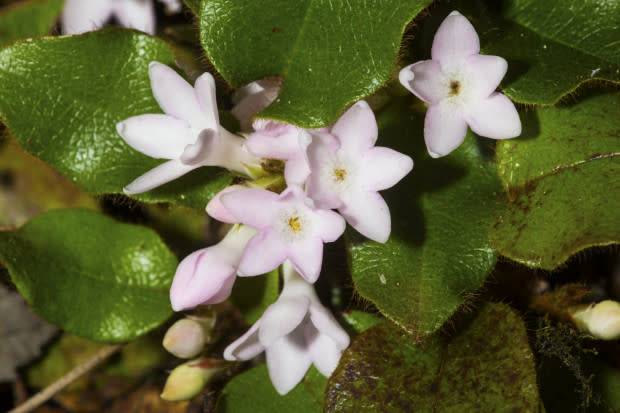
iStock
But of course! The Massachusetts state flower is the mayflower, an homage to the ship of the same name that carried Calvinist colonizers over from England.
Related: Magical Fairy Garden Ideas for Your Backyard
Michigan State Flower: Apple Blossom

New York may be nicknamed the Big Apple, but the apple blossom is the official Michigan state flower. It shares its state flower with Arkansas.
Minnesota State Flower: Pink and White Lady's Slipper
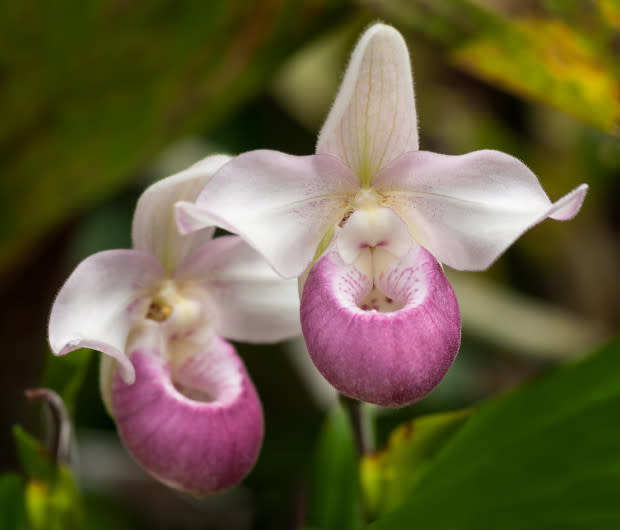
iStock
The pink and white lady's slipper, also called the queen's lady slipper or the showy lady's slipper, is the Minnesota state flower. It was named the state flower in 1902.
These flowers are slow growers, taking up to 16 years to produce their first blossoms, and can live for up to 50 years.
Related: Fill up Those Boring Corners in Your Home With Any of These 25 Tall Indoor Plants
Mississippi State Flower: Evergreen Magnolia
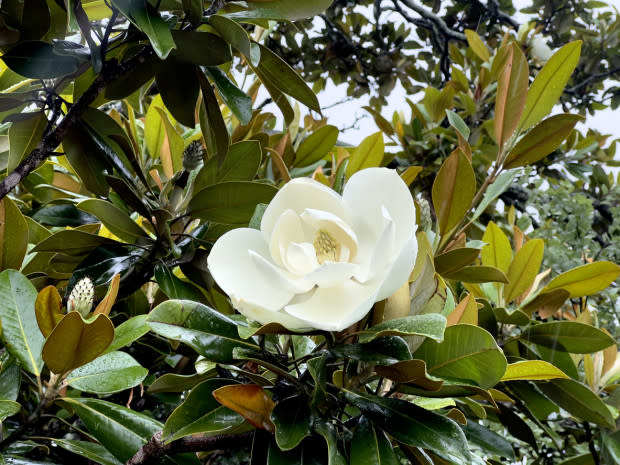
iStock
The Mississippi state flower is the evergreen magnolia, which is also the Mississippi state tree. It's fitting, since Mississippi is known as the Magnolia State.
Missouri State Flower: Hawthorn
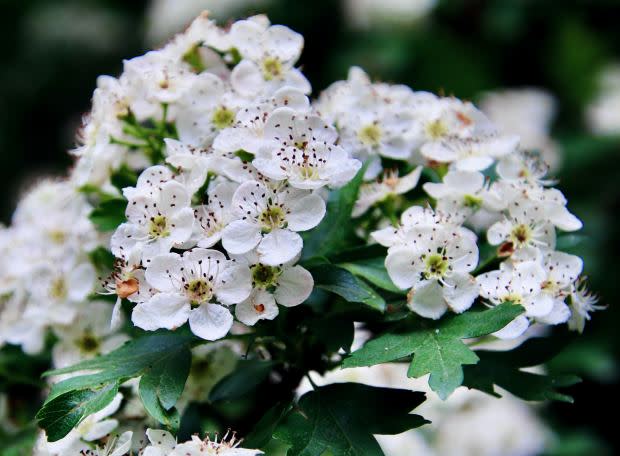
The Missouri state flower has been the hawthorn since 1923. About 75 different hawthorn species thrive in Missouri. They resemble apple blossoms, and they can even produce small red fruit called hawthorn berries. While hawthorn berries aren't technically poisonous, eating too many of the seeds can actually cause cyanide poisoning—so either be super careful or just stick to actual apples.
Montana State Flower: Bitterroot
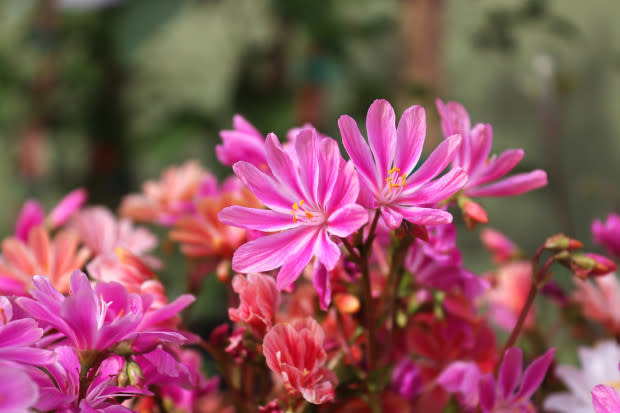
iStock
Bitterroot is the Montana state flower, but they're sweet to look at, aren't they? These pretty perennials are common in the western United States and can be pink or white, often appearing to grow from bare gravel with no stems or leaves. This is because the flowers tend to blossom and bloom after the leaves have already withered away. Several Native American tribes have used bitterroot for food and trade.
Nebraska State Flower: Giant Goldenrod
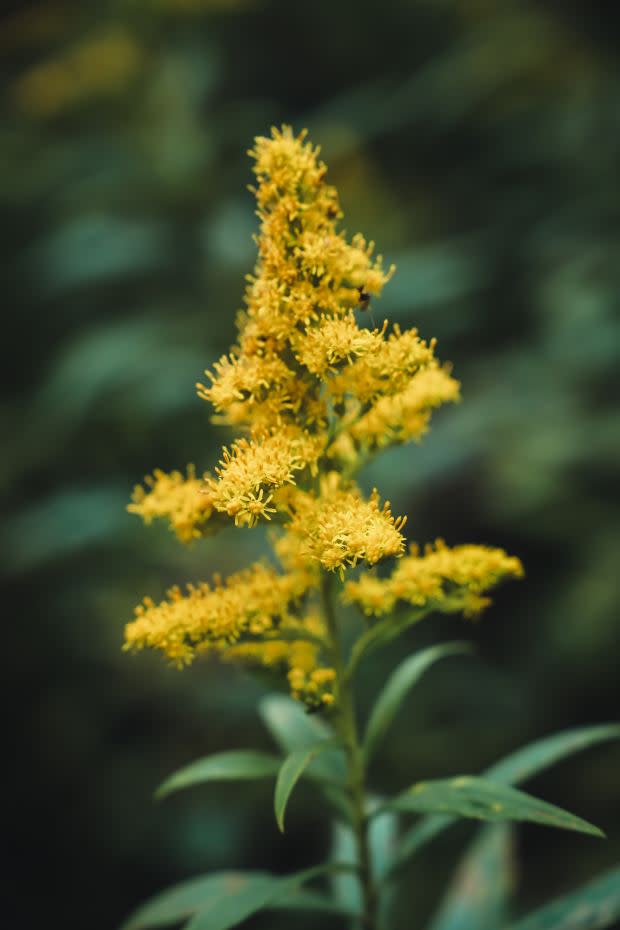
The Nebraska state flower is the giant goldenrod. Like Kentucky's goldenrod, it is a keystone species for insects and birds. It can grow up to almost seven feet in height.
Nevada State Flower: Big Sagebrush
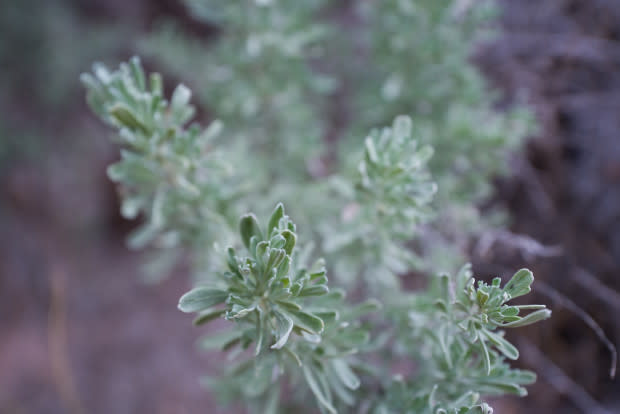
iStock
Known as the Sagebrush State, the Nevada state flower is the big sagebrush. In late spring and summer, some sagebrush will have small white or yellow flowers. For most of the year, it appears as a silvery-green shrub that's especially fragrant when damp.
New Hampshire State Flower: Purple Lilac

The New Hampshire state flower is the fragrant and beautiful purple lilac. After a debate over several other options for state flowers in 1919, New Hampshire chose the lilac because it was "symbolic of that hardy character of the men and women of the Granite State."
Related: Breathe Easier With These 34 Air-Purifying Indoor Plants for Your Home or Office
New Jersey State Flower: Purple Violet

iStock
The New Jersey state flower is the purple violet. While the name may seem redundant, violets can actually come in a wide array of colors.
New Mexico State Flower: Yucca Flower
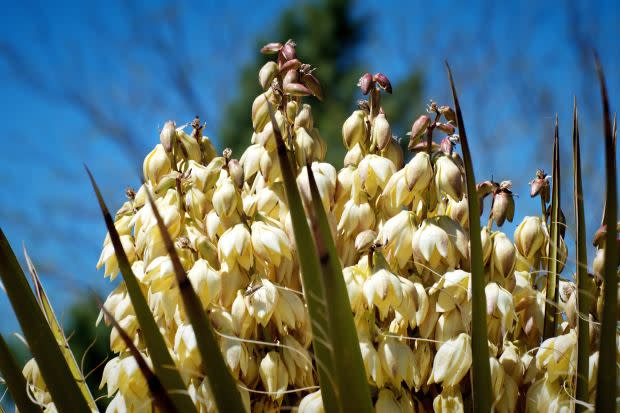
The New Mexico state flower is the soaptree yucca flower. The blossoms are actually edible, and because the yucca is so hardy, cattle would sometimes eat them during drought seasons. Settlers found myriad uses for yucca, including using its fibers for rope and its roots as a soap substitute. It was chosen as the official state flower in 1927.
New York State Flower: Rose
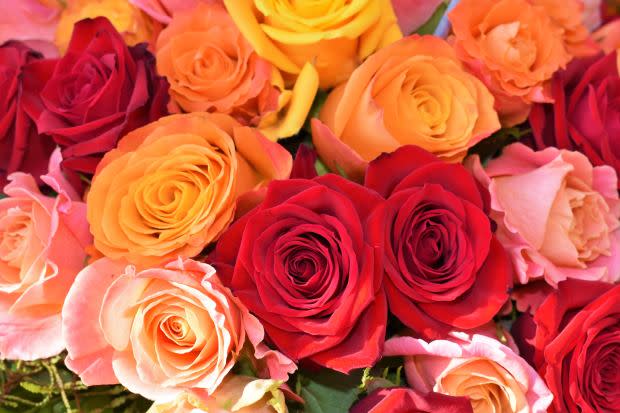
The New York State flower is the rose, and the Big Apple doesn't discriminate: all species and colors of roses are included as of 1955.
North Carolina State Flower: Dogwood
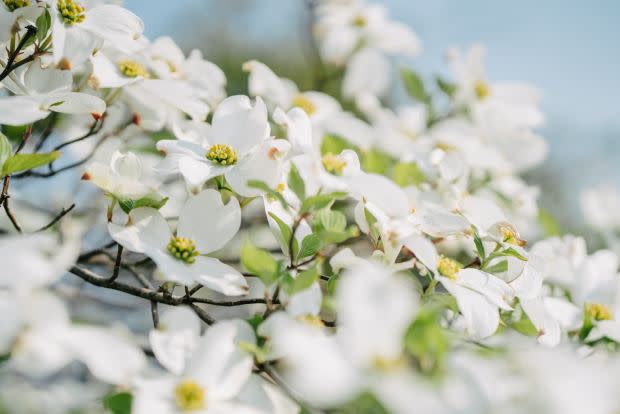
The flowering dogwood was named the North Carolina state flower in 1941, with the North Carolina general assembly calling it “a radiantly beautiful flower which grows abundantly in all parts of this state.”
Related: Cloudy Day? No Problem! 19 Best Vegetables and Plants To Grow in the Shade
North Dakota State Flower: Wild Prairie Rose
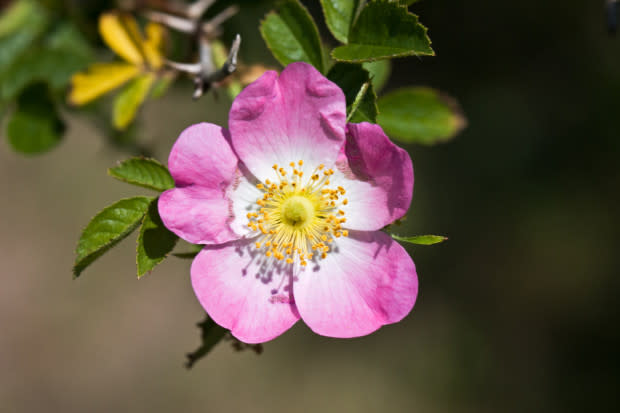
iStock
The North Dakota state flower is the wild prairie rose, a pink blossom that is native to the area.
Ohio State Flower: Red Carnation
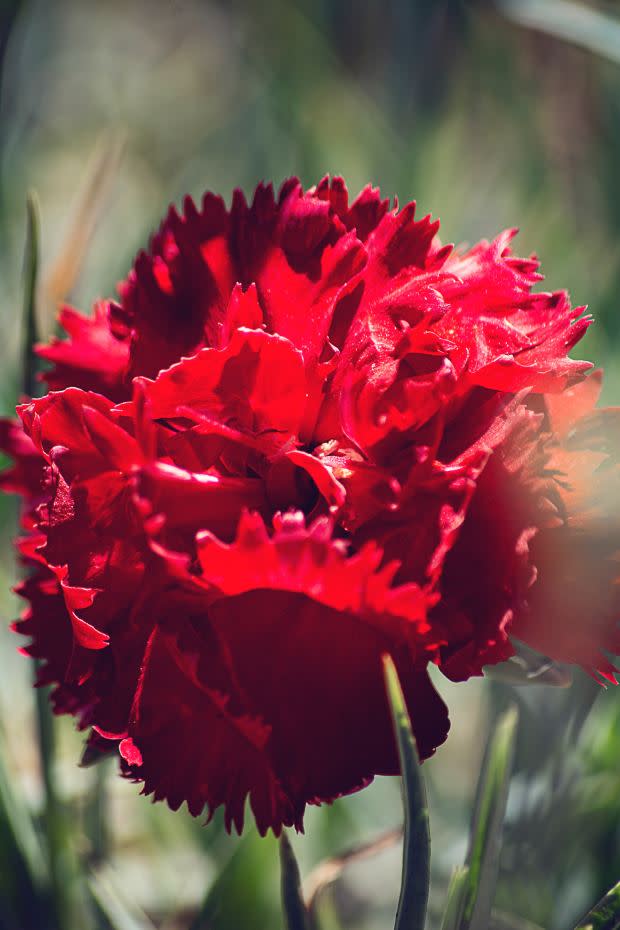
The red carnation is the Ohio state flower in honor of President William McKinley, who was born in the state. McKinley frequently wore red carnations pinned to his jacket, and Ohio named it the official state flower in 1953.
Oklahoma State Flower: Oklahoma Rose
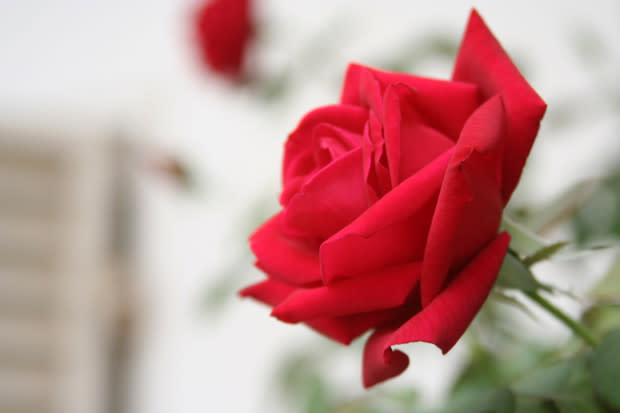
iStock
The Oklahoma rose, a deep red hybrid tea rose and large double-blooms, is the official Oklahoma state flower as of 2004.
Oregon State Flower: Oregon Grape
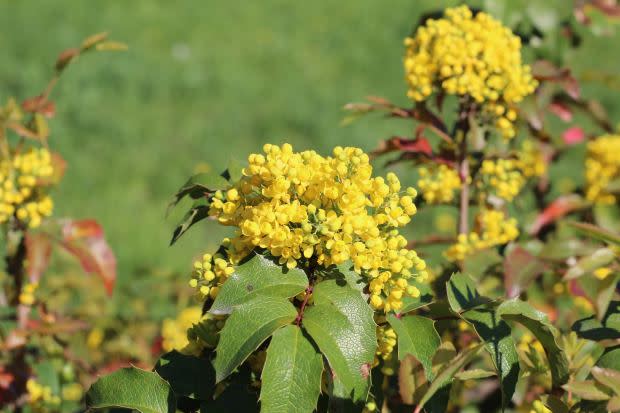
The Oregon grape is the Oregon state flower, designated in 1899. The Oregon grape is a shrub with evergreen leaves and small yellow flowers and produces dark blue bitter grapes that are used in preserves. Some of the bark, stems and roots can also be used to create yellow dyes. The vibe is very Portland, in the best way.
Pennsylvania State Flower: Mountain Laurel
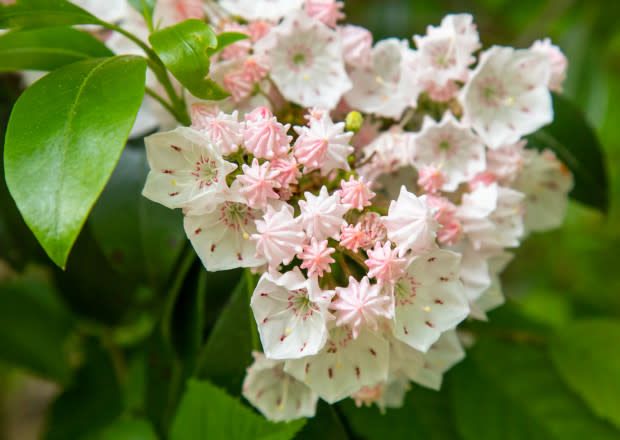
iStock
The Pennsylvania state flower is the mountain laurel, which it shares with Connecticut.
Rhode Island State Flower: Common Blue Violet
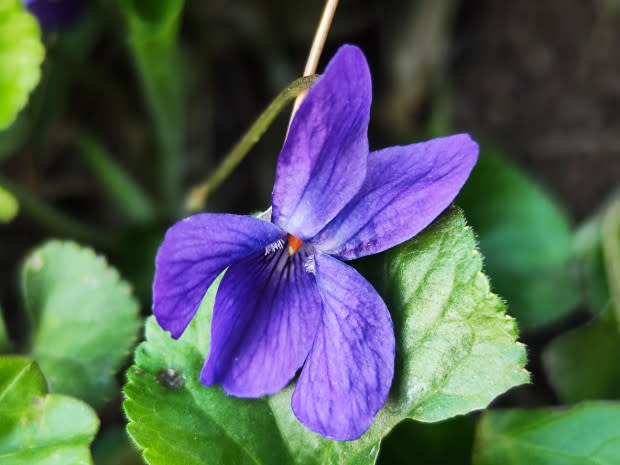
iStock
Like Illinois, the Rhode Island state flower is the common blue violet.
Related: 100+ Vacation Instagram Captions
South Carolina State Flower: Yellow Jessamine
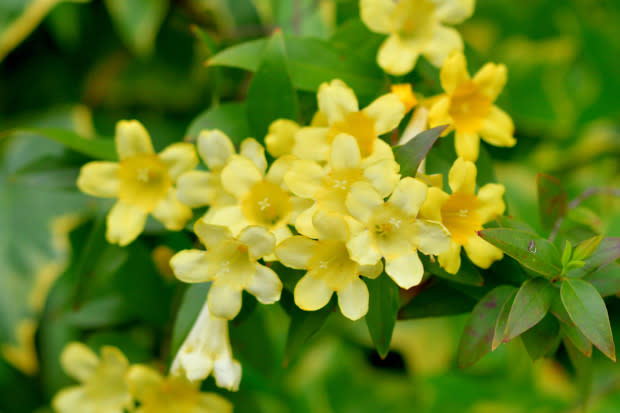
iStock
While the South Carolina state flower resembles a daffodil, the yellow jessamine is actually a member of the jasmine family. It was chosen by the South Carolina state legislature for its almost omnipresence in the state, its fragrance, and that "its delicate flower suggests the pureness of gold; its perpetual return out of the dead winter suggests the lesson of constancy in, loyalty to, and patriotism in the service of the state."
South Dakota State Flower: American Pasque
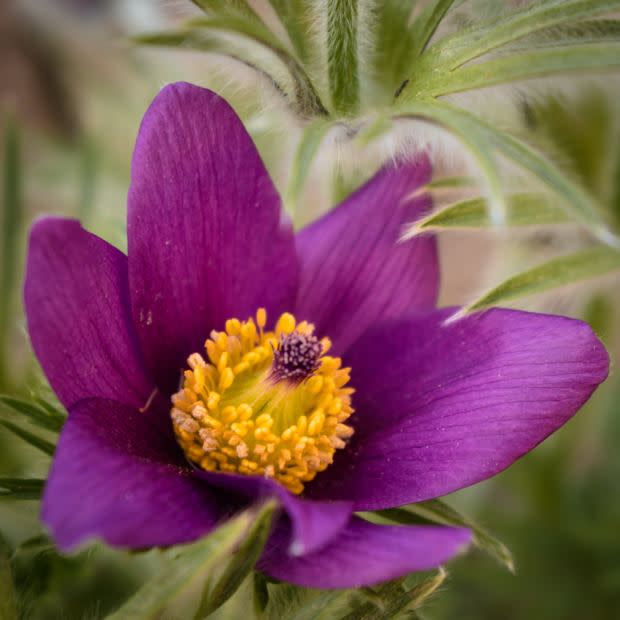
The South Dakota state flower is the American pasque as of 1903. Also known as the May Day flower, it's a wildflower that grows throughout the state and is one of the first flowers to bloom in the region in springtime.
While the American pasque is beautiful, it's toxic, so do not try to eat this!
Tennessee State Flower: Purple Iris
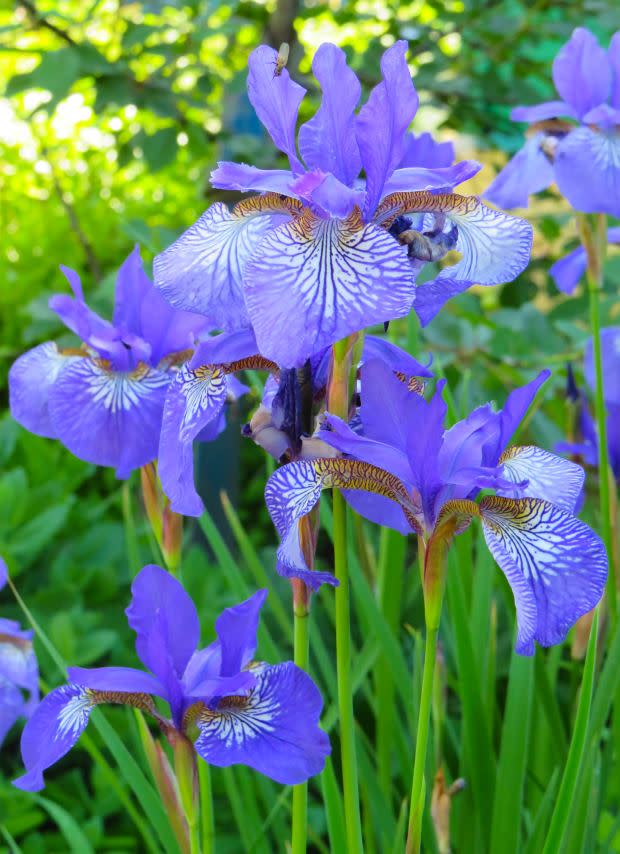
The Tennessee state flower is the purple iris. (We see you, Goo Goo Dolls fans.) The honor was designated in 1933. Tennessee also has two state wildflowers: the passion flower and the Tennessee coneflower.
Texas State Flower: Bluebonnet
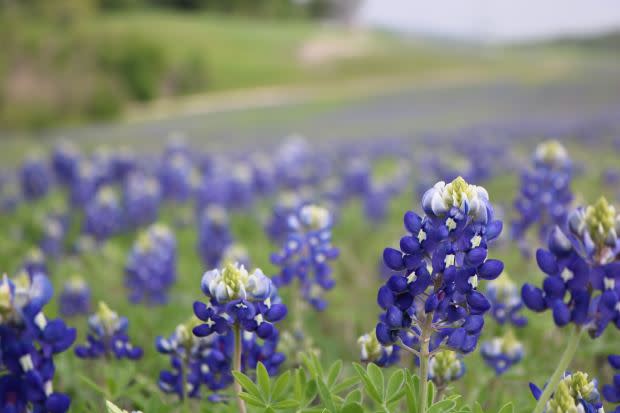
The official Texas state flower is the bluebonnet—not the yellow rose, as is often believed. The flower was chosen by the National Society of Colonial Dames of America in 1901 as a means of honoring pioneer women from the state.
There are many varieties of bluebonnets, but Lupinus Texensic and Lupinus Subcarnosis are species exclusive to Texas.
While beautiful, all bluebonnets are highly toxic to humans and pets if ingested.
Utah State Flower: Sego Lily
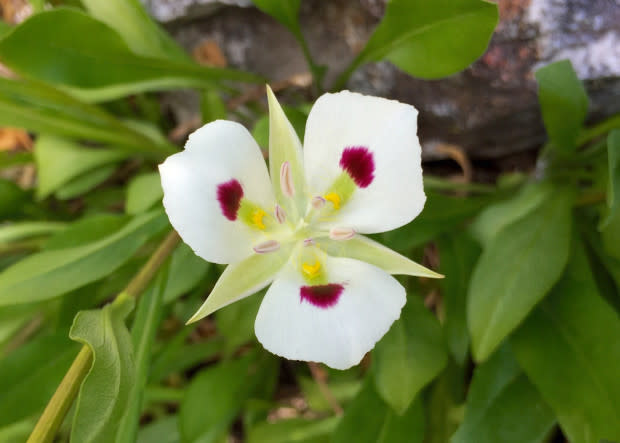
iStock
The sego lily is the Utah state flower, which was designated in 1911. It was largely used to represent Utah at the World's Columbian Exposition in 1893. The sego lily is native to Utah, Wyoming and parts of other western states.
Related: Create Your Own Butterfly Paradise With These 35 Plants and Flowers That Attract Butterflies
Vermont State Flower: Red Clover

The Vermont state flower is the red clover, a symbol of the farmers and agriculture in the Green Mountain State. While its name is red clover, its flower is actually purple!
Virginia State Flower: Dogwood
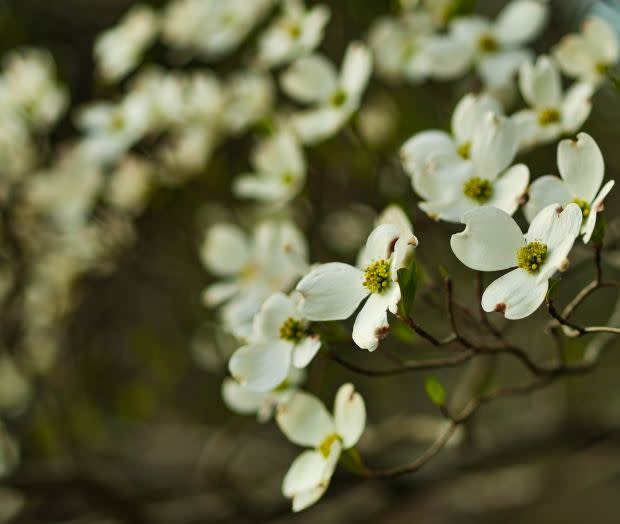
Like North Carolina, the Virginia state flower is the dogwood. The dogwood is also the Virginia state tree.
Washington State Flower: Coast Rhododendron
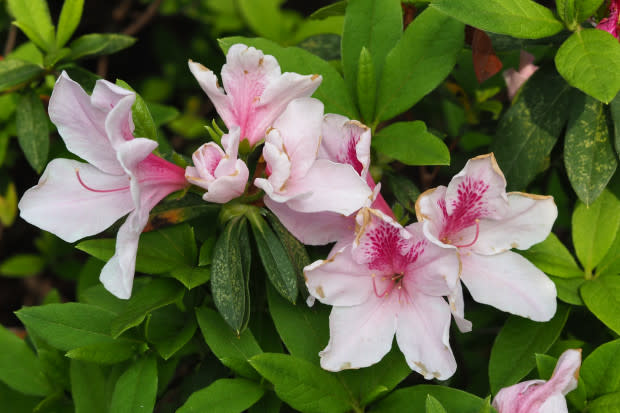
While the coast rhododendron wasn't officially named the Washington state flower until 1959, it had been associated with the state for years after it was selected to represent Washington at the World's Fair in 1893.
West Virginia State Flower: Great Rhododendron
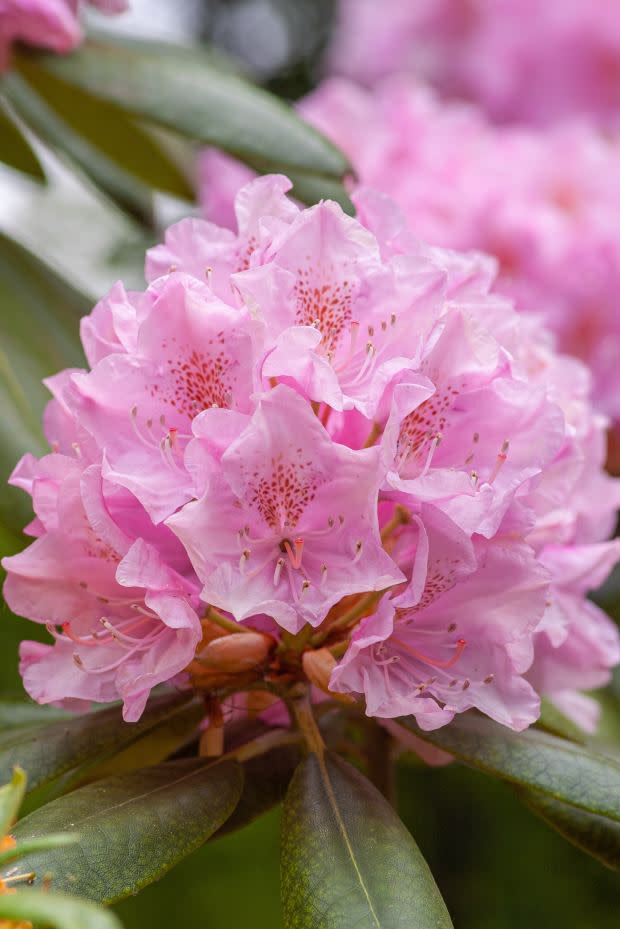
The great rhododendron is the West Virginia state flower, selected by school children in 1903. The flowering shrubs can have pink, white and purple blossoms and bloom in late spring.
Related: 31 Cat-Safe Plants That You Should Add to Your Collection Right Meow
Wisconsin State Flower: Wood Violet
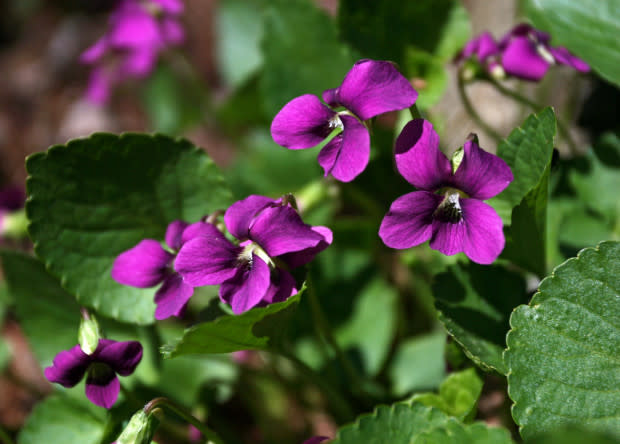
iStock
The Wisconsin state flower is specifically the wood violet. This species is common in Wisconsin forests.
Wyoming State Flower: Indian Paintbrush
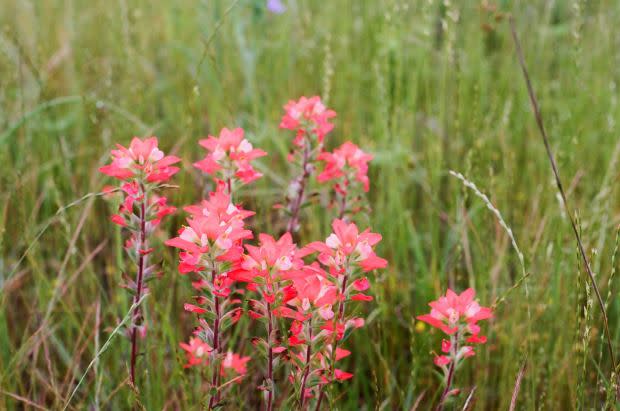
The Indian paintbrush is the Wyoming state flower since 1917. Several Native American tribes, including the Navajo and Chippewa (who call it "grandmother's hair"), use the plant for medicinal purposes.